房室回帰性頻拍(atrioventricular reentrant tachycardia:AVRT)

心房と心室は刺激伝導系でつながっていますが、副伝導路がある場合に心房、房室結節、心室を含んだ大きなリエントリー回路が形成されて頻拍発作が生じます。
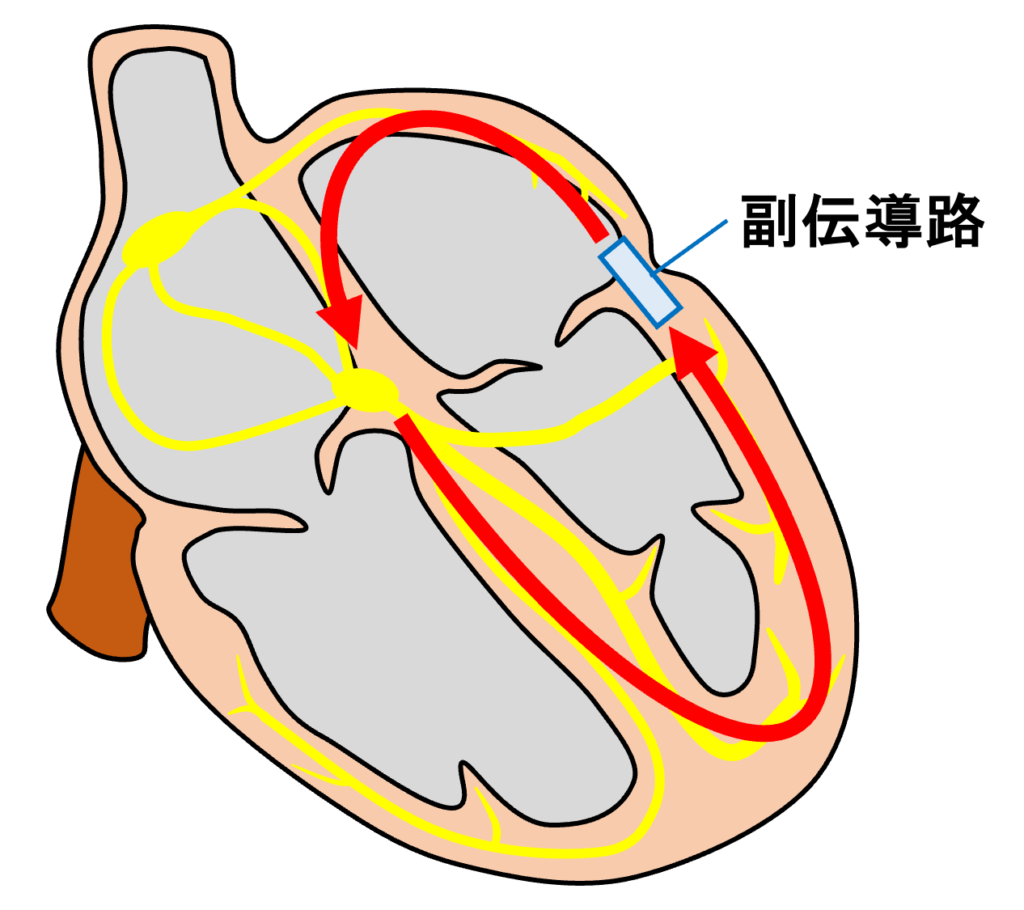
順方向性房室回帰性頻拍(orthodromic AVRT:ORT)
房室回帰性頻拍の約90%は順方向性房室回帰性頻拍で、興奮は房室結節を順方向(心房→心室方向)に伝導し、副伝導路(Kent束)を逆行性(心室→心房方向)に伝導します。順行伝導は房室結節から刺激伝導系を通って心室へ興奮を伝えるためnarrow QRSとなります。
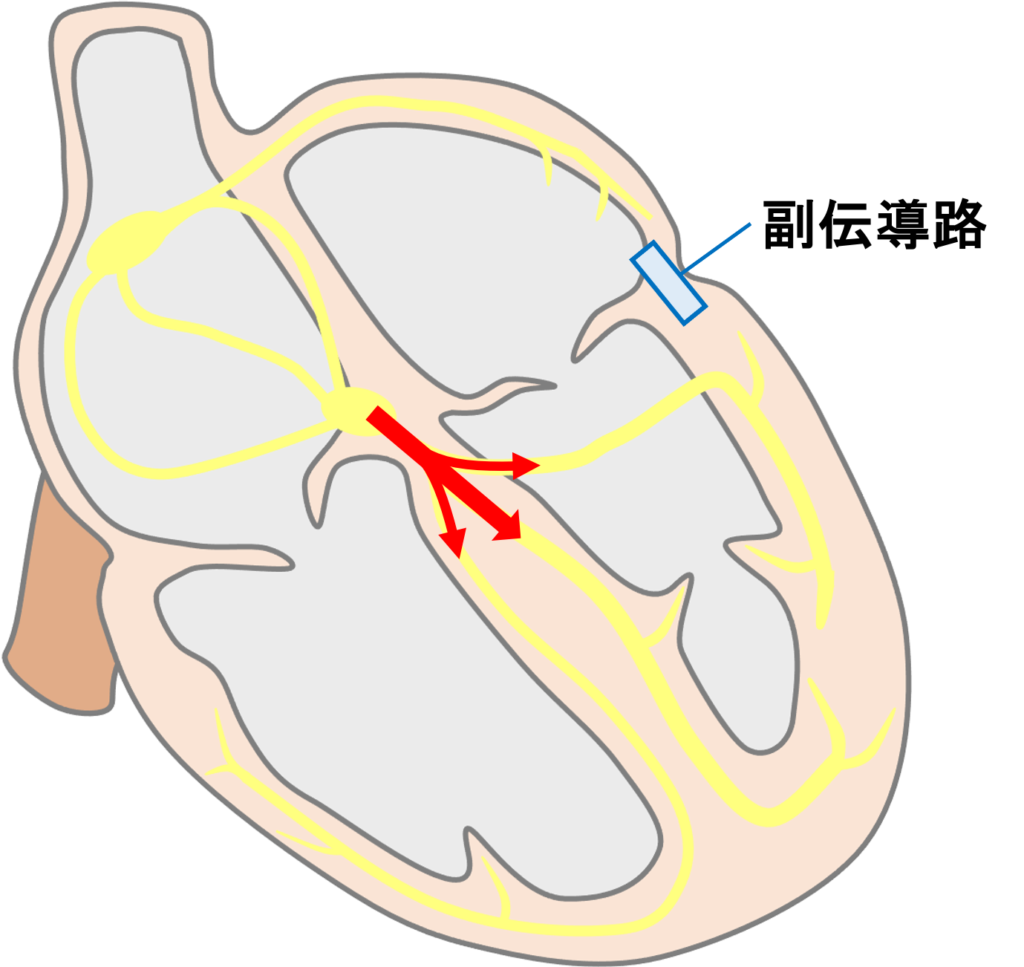
P波
順方向性房室回帰性頻拍では、通常ST部分の初期に逆行性のP波が見られます1)。P波は先行するQRS波の近くに位置しており、RR間隔の前半に存在していることからshort RP頻拍と言われます。
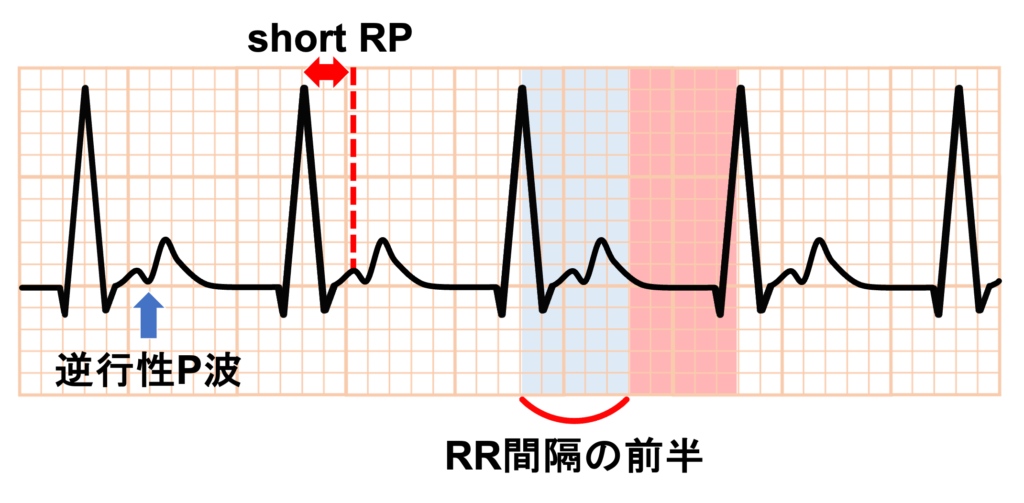
逆行性P波の形に関しては副伝導路の位置によって変化するため様々な形を取ります。一般的にはⅡ、Ⅲ、aVF誘導でP波が陰性であれば副伝導路は後壁側(弁輪で言う下側)、P波が陽性であれば副伝導路は前壁側(弁輪で言う上側)と考えられます。
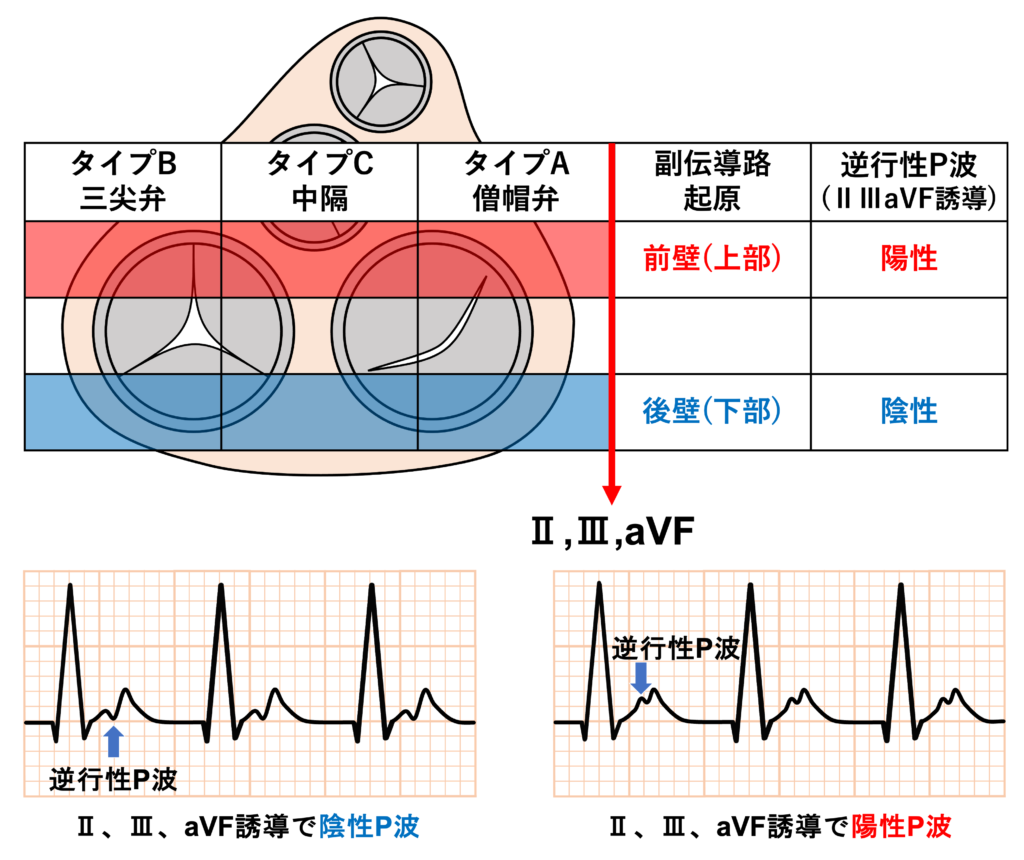
停止様式
ATP
ATPを投与すると房室結節の伝導が一時的にブロックされます。順方向性房室回帰性頻拍では房室結節をリエントリー回路に含んでいるため、ATPによる房室ブロックにより逆行性P波を最後に頻拍が停止します。
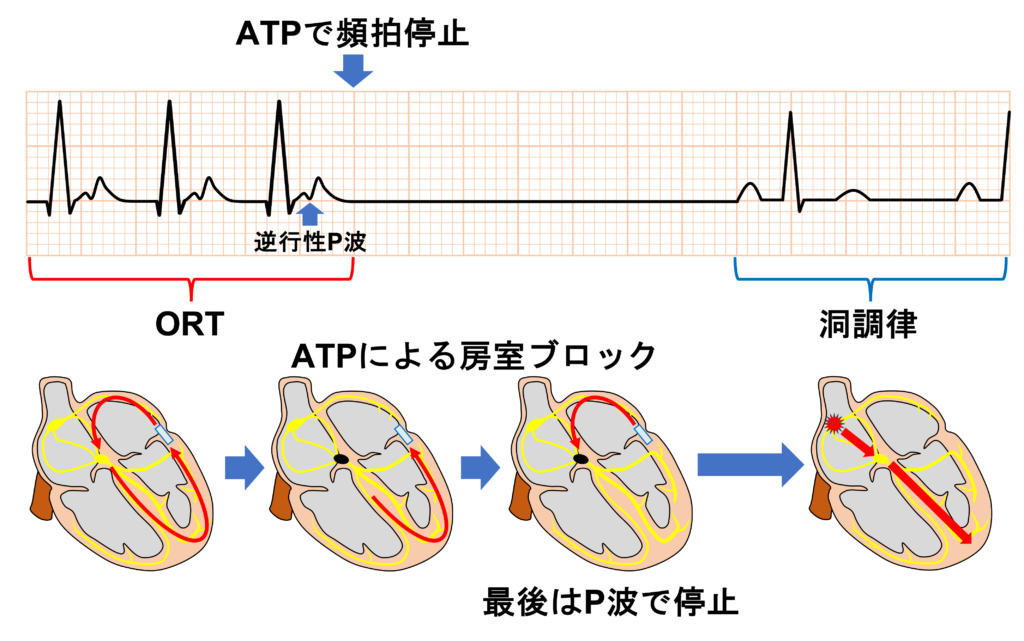
自然停止
順方向性房室回帰性頻拍が自然に停止する時、副伝導路で停止する場合と房室結節で停止する場合があります。副伝導路で停止する場合、最後は心室が興奮するためQRS波で終わります。
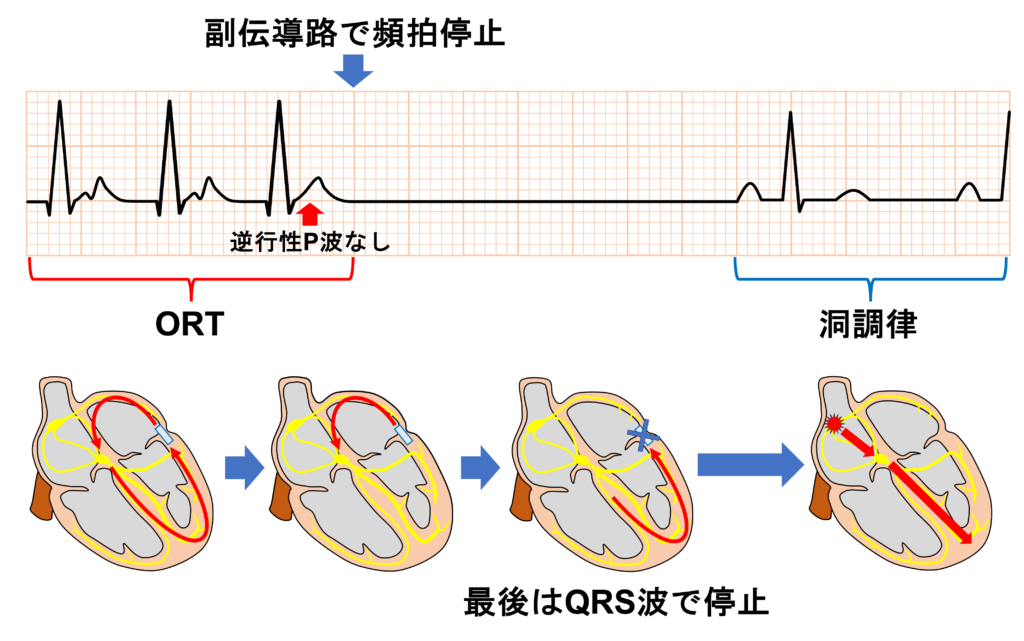
房室結節で停止する場合、最後は心房が興奮するため逆行性P波で終わります。
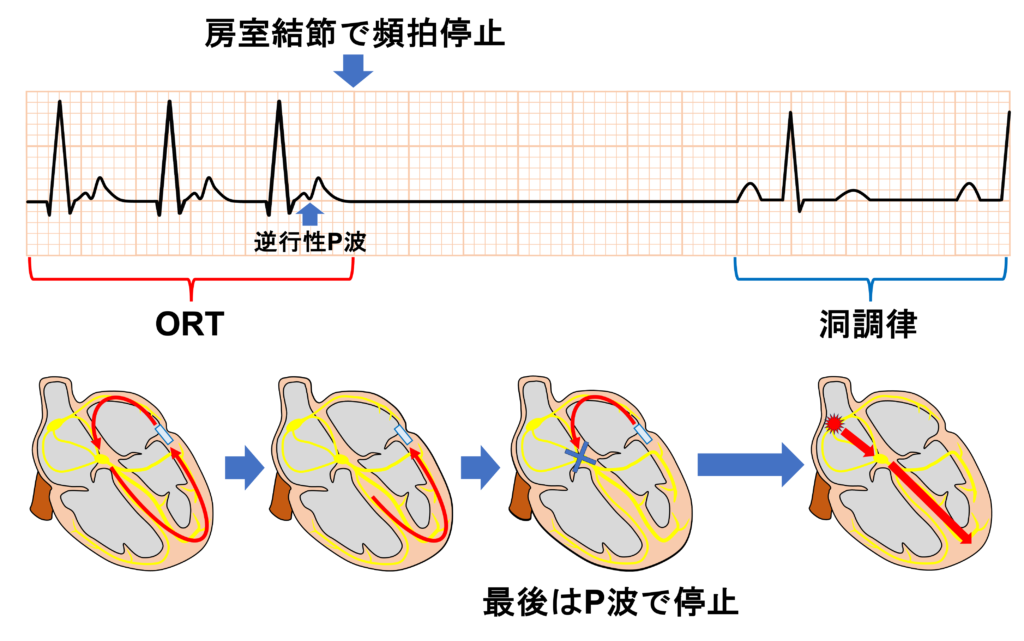
逆方向性房室回帰性頻拍(antidromic AVRT : ART)

逆方向性房室回帰性頻拍は心房→Kent束を順伝導→心室→房室結節を逆伝導→心房の順で旋回し,wide QRS頻拍を呈するAVRTのことです。
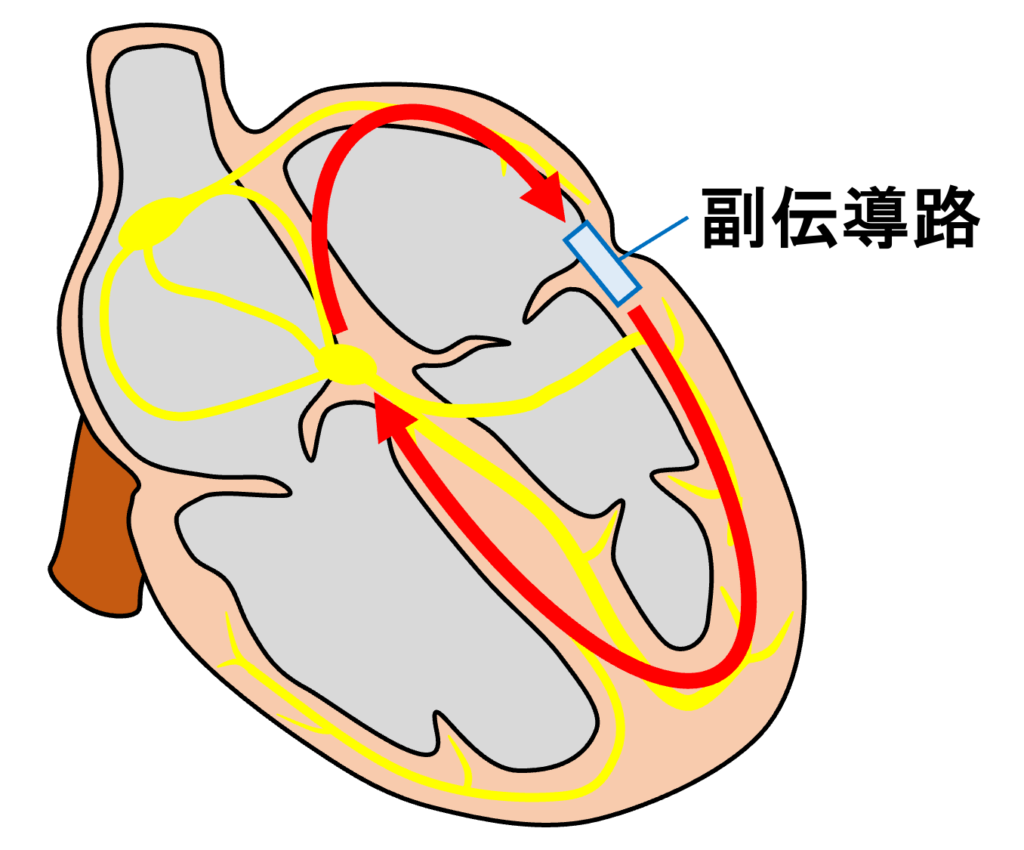
刺激伝導系ではなく副伝導路の付着する心室筋に興奮が伝わるためwide QRSとなり心室頻拍のような波形になります。preexcitation AVRTとも呼ばれます。
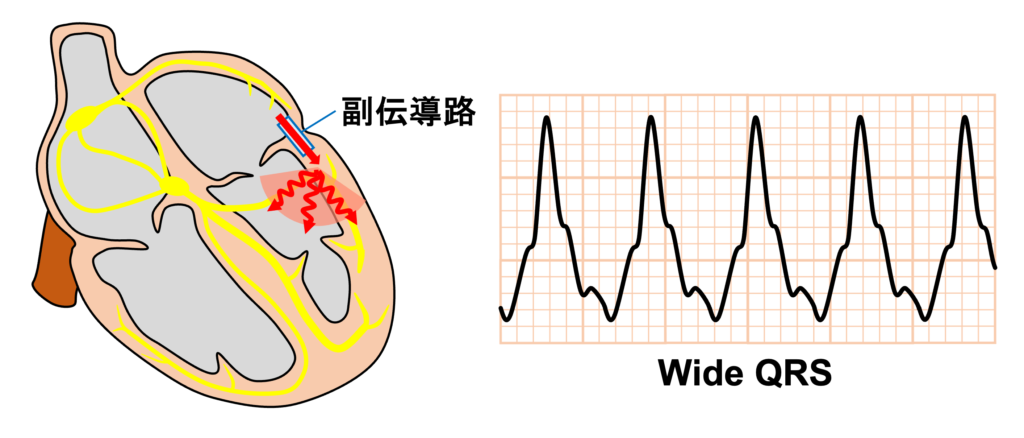
Bidirectional AVRT
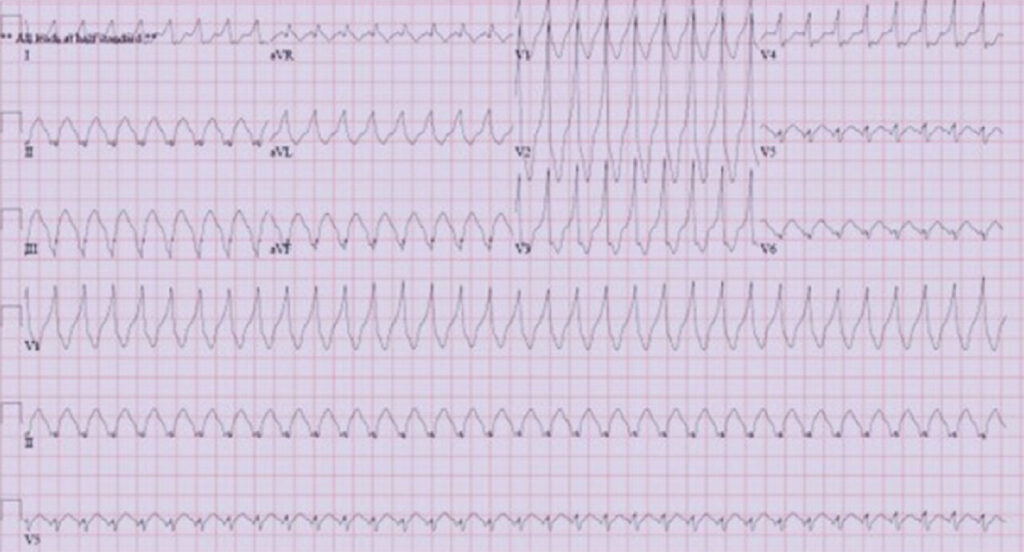
副伝道路が2つ存在し、心房→副伝導路を順伝導→心室→別の副伝導路を逆伝導→心房の順で旋回し、wide QRS頻拍を呈するAVRTのことです。比較的稀な疾患であり、duodromic tachycardiaとも呼ばれます2)。
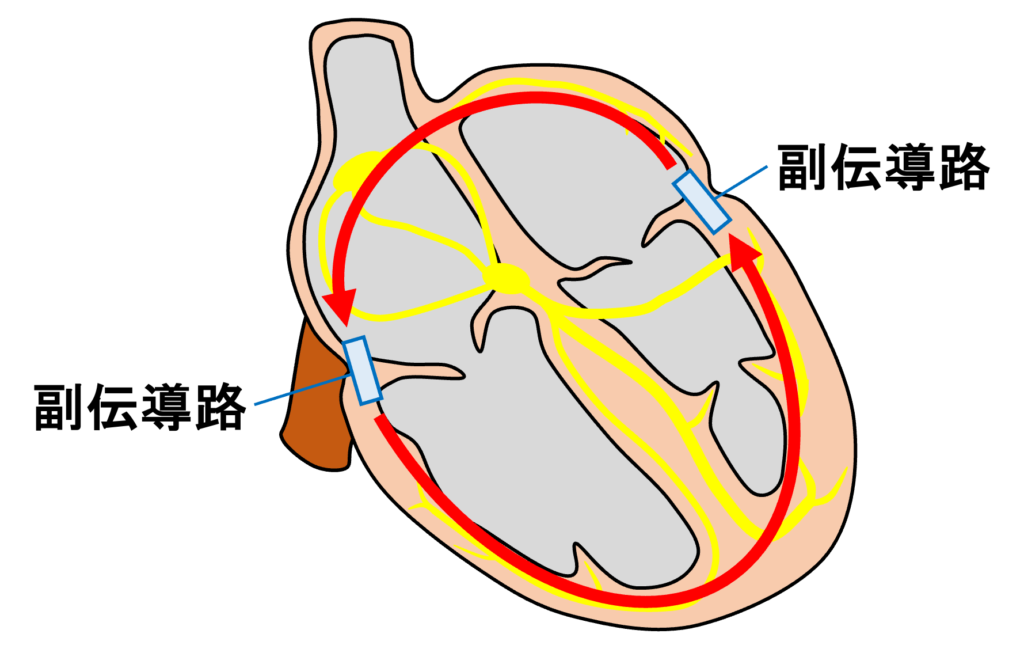
参考文献
1)Atrioventricular Reentrant Tachycardia. AACN Adv Crit Care. 2017 Summer;28(2):223-228.←AVRTのレビュー
2)Duodromic tachycardia: A case report of a rare presentation of wide complex supraventricular tachycardia. HeartRhythm Case Rep. 2024 Feb 22;10(5):321-325.←13歳のATPで停止しない頻拍の症例報告
書籍
エキスパートはここを見る心電図読み方の極意 P80-87
心電図マイスターによる3→1級を目指す鑑別力grade up演習 P156-157
心電図マイスターを目指す基礎力grade up講座 P63-66



